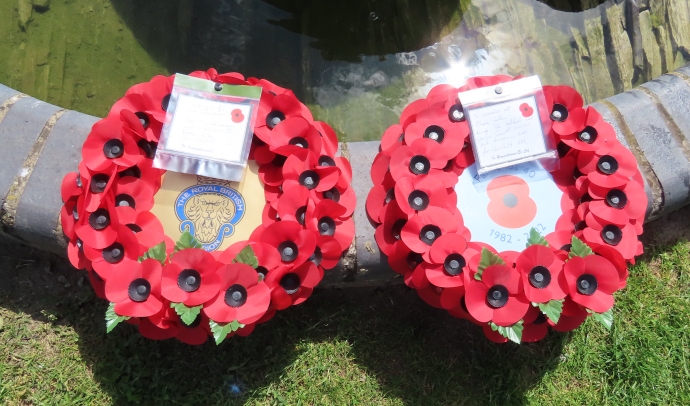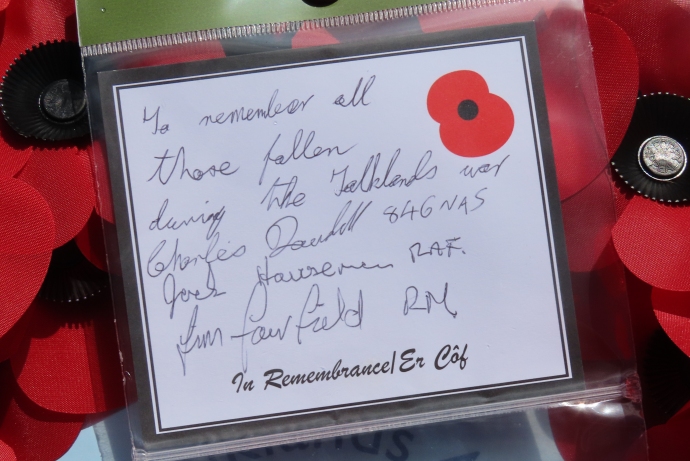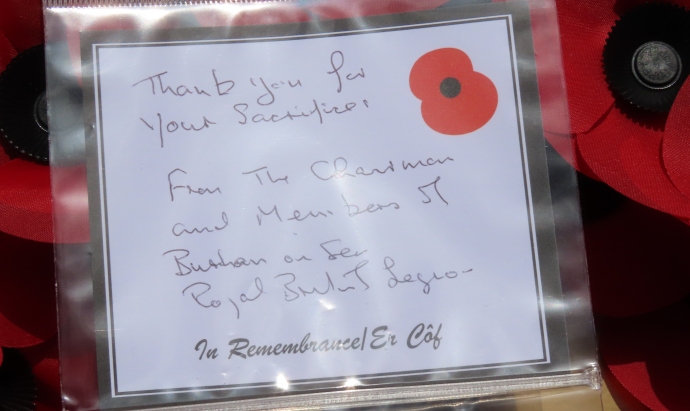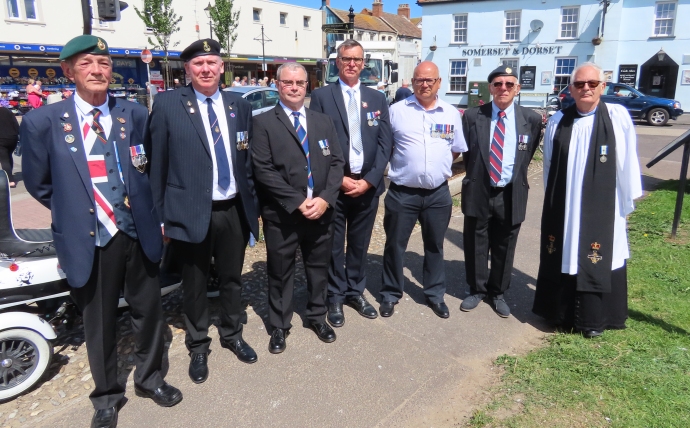Seven local veterans of the Falklands War were among around 100 people who attended a special ceremony in Burnham-On-Sea on Tuesday (June 14th) to mark the 40th anniversary of the conflict.
Burnham-On-Sea’s branch of the Royal British Legion organised the event next to the town’s flag pole at the top of Abingdon Street.
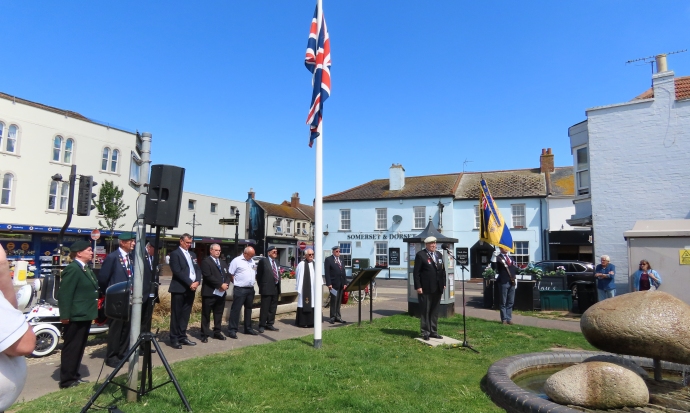
John Crosby, Chairman of Burnham’s Royal British Legion, led the event alongside Rev Richard Sigrist, a local retired Royal Navy padre who is also a former Falklands veteran.
The ceremony included words from local Falklands veteran Charles Dowdall (see speech below), The Exhortation, Last Post, two minutes’ silence, the Reveille, The Kohima, prayers, and the National Anthem.
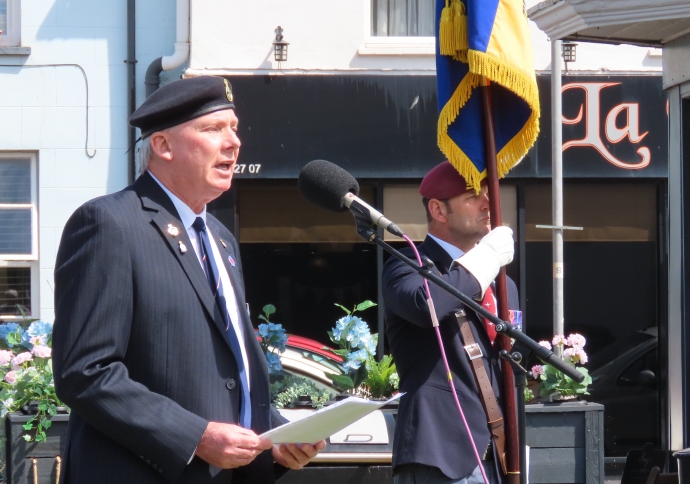
Two wreaths were laid on behalf of local veterans by Jim Fairfield, former Corporal AE2 in the Royal Marines, and Charles from Burnham’s Royal British Legion branch.
Seven local veterans of the Falklands campaign from the Burnham-On-Sea area took part in Tuesday’s ceremony, along with local dignitaries, residents and members of the Royal British Legion.
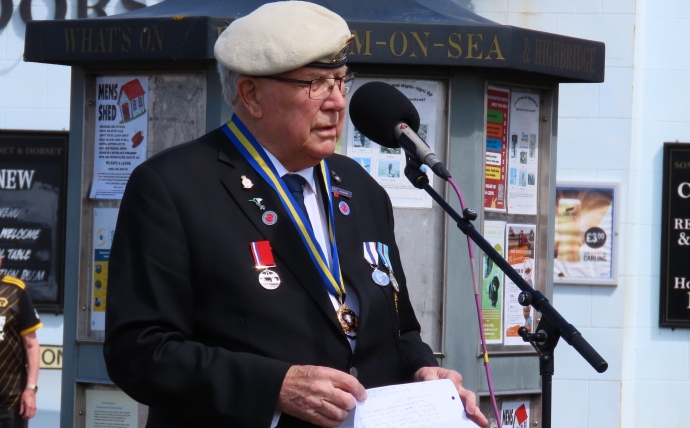
John Crosby, branch Chairman, above, said afterwards: “Our thanks go to everyone who attended this special short ceremony to mark the 40th anniversary of the end of the conflict and to remember those who lost their lives.”
Among the dignitaries were Burnham and Highbridge Mayor Lesley Millard, Somerset RBL County Chairman Major Robert McDonald, and Sedgemoor District Council Vice Chairman Mike Facey. Mr Crosy added the Legion’s thanks to GC Music, who provided the sound system for the event, and May’s Cafe for their support.

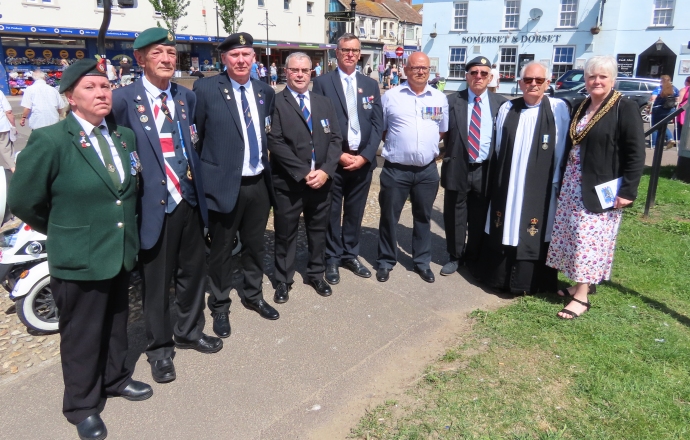
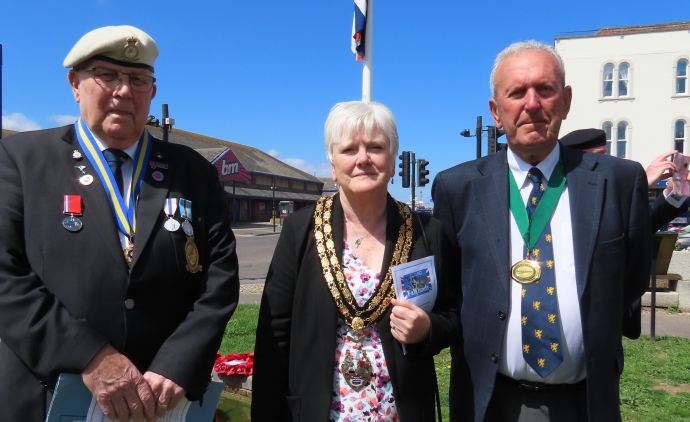
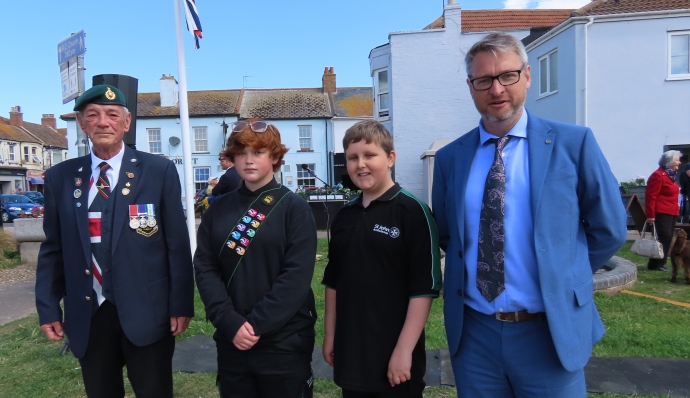
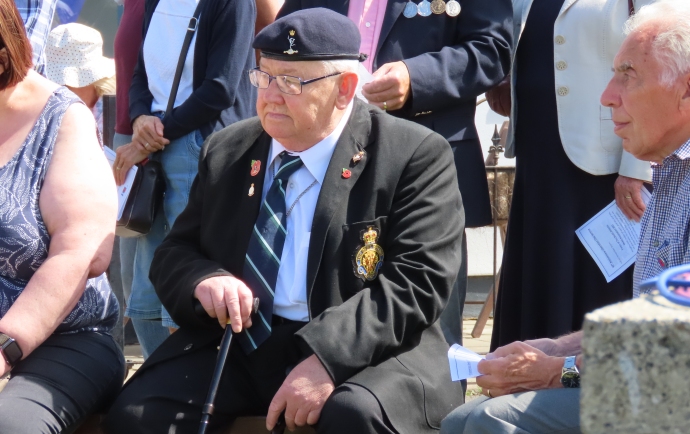
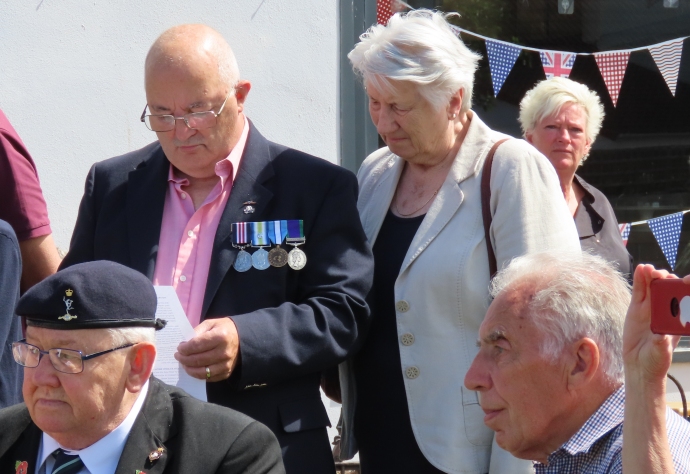
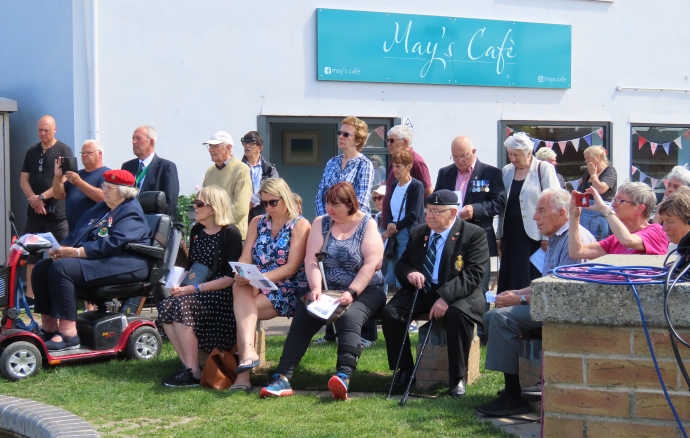
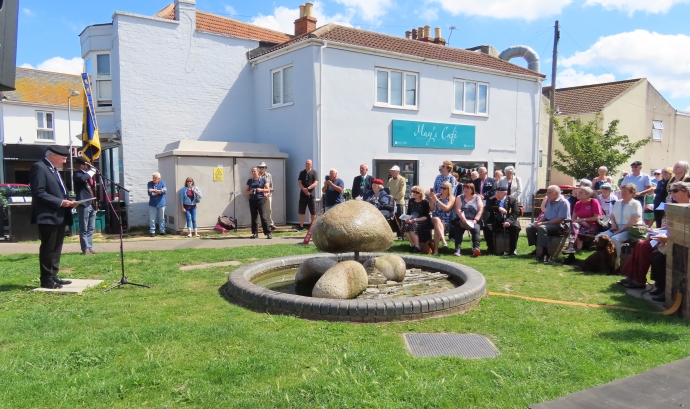
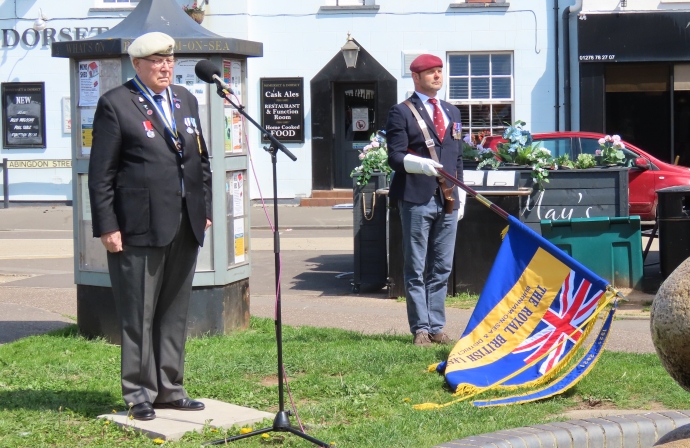

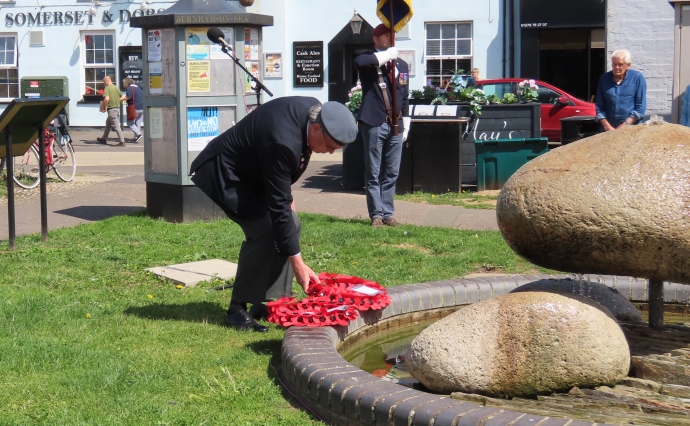
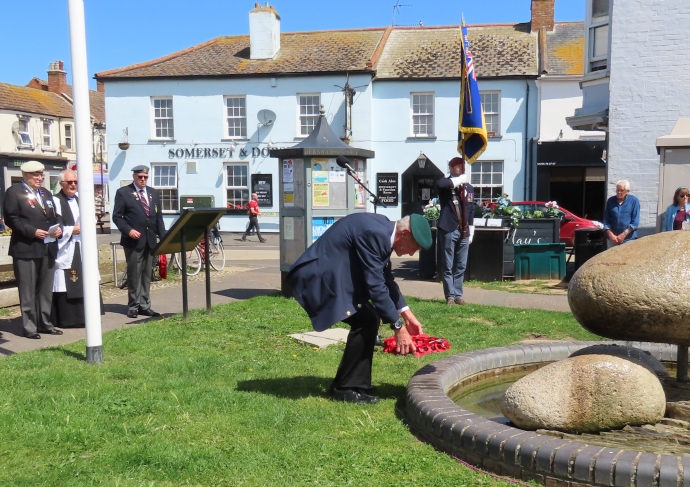
Burnham Falklands veteran recalls conflict
Charles Dowdall explained his memories of the conflict:
“Over 127 ships and nearly 30,000 personel would be involved in the war.”
“In Portsmouth on 5th April 1982, we left in high spirits after a good run ashore in Portsmouth. I was on HMS Hermes with my sqd 846 NAS and we made our way down south with a buzz and excitement on the ship.”
“HMS Sheffield who was returning to the UK afater a six-month deployment. She was told to join the fleet. We heard she got hit after taking on casualties and we now realised this was going to be no picnic. The attitude of the ship’s company had now changed.”
“We continued down south where the air raids increased and the chaff could be heard firing, with the sound of hands to action stations now echoing around the ship.”
“The captian’s quick action saved our ship as two missiles had been fired at us. Sadly, they found a new target and hit the Atlantic conveyer.”
“As we got closer to the Falklands we transfered to HMS Fearless who also came under attack as we sailed in to San Carlos to disembark the troops.”
“I remember watching the Royal Marines’ young faces carrying large packs who were very keen to get ashore. We followed the troops ashore to set up operations.”
“This was a now a differant war for us, being on the island as in San Carlos Bay we lost HMS Antelope and HMS Ardent. We transfered on to the Sir Galahad with the Welsh Guards onboard to move to Bluff Cove to get closer to Port Stanley.”
“We left the Galahad set up as our forward refuelling base. We later heard what had happened to the Sir Galahad and looked back and saw her on fire.”
“We made our way to Port Stanley, and set up our operations at the race course. We saw the paras in action and I remember saying that I’m glad they were on our side. The news we had been waiting for came in. Splice the mainbrace. Not long after we flew out to the Canberra and sailed home. Now we remember those who didn’t get home.”
255 British troops, 649 Argentine military personnel and three Falkland islanders died during the the 10-week war.
